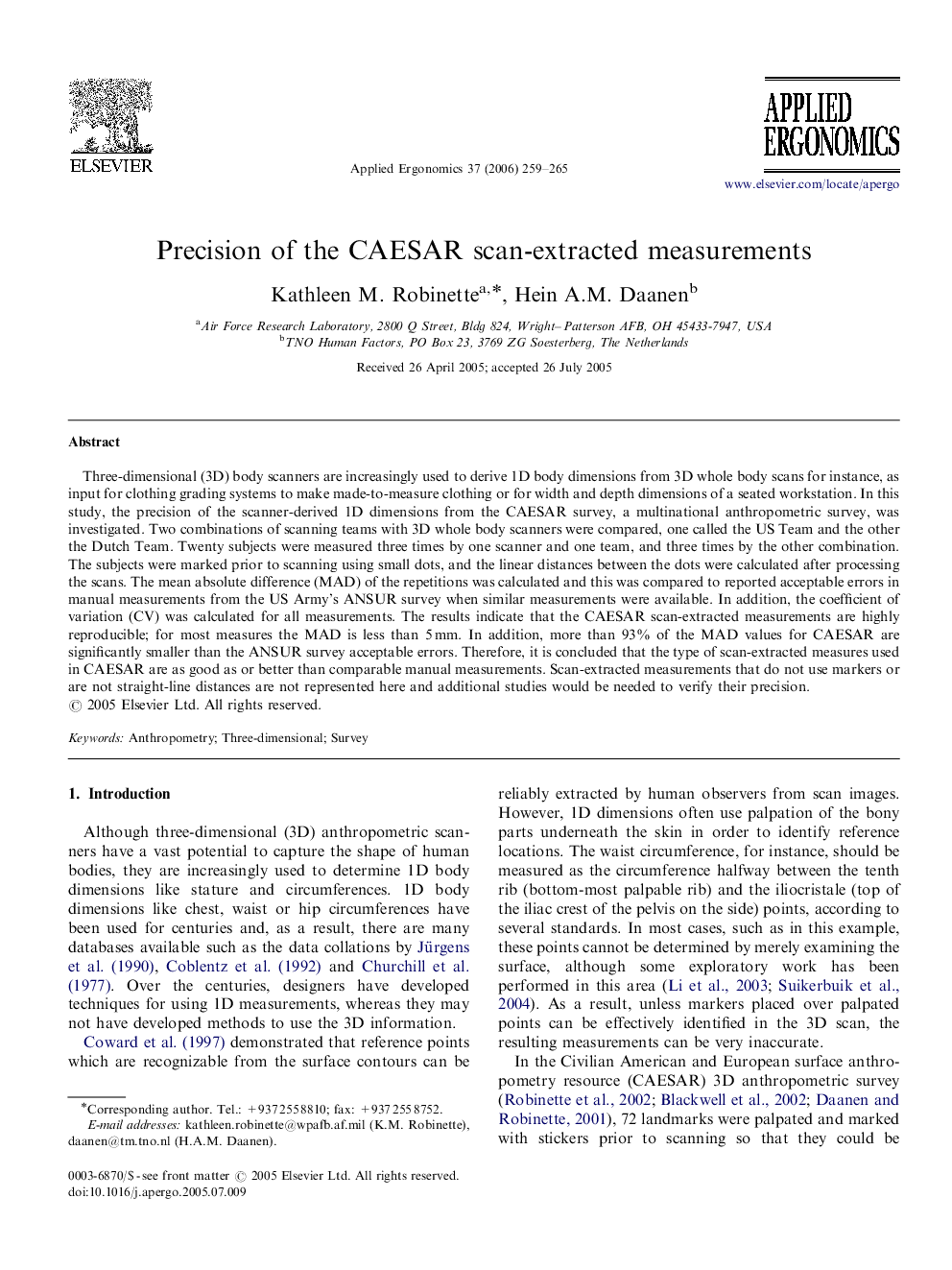| کد مقاله | کد نشریه | سال انتشار | مقاله انگلیسی | نسخه تمام متن |
|---|---|---|---|---|
| 551503 | 872861 | 2006 | 7 صفحه PDF | دانلود رایگان |

Three-dimensional (3D) body scanners are increasingly used to derive 1D body dimensions from 3D whole body scans for instance, as input for clothing grading systems to make made-to-measure clothing or for width and depth dimensions of a seated workstation. In this study, the precision of the scanner-derived 1D dimensions from the CAESAR survey, a multinational anthropometric survey, was investigated. Two combinations of scanning teams with 3D whole body scanners were compared, one called the US Team and the other the Dutch Team. Twenty subjects were measured three times by one scanner and one team, and three times by the other combination. The subjects were marked prior to scanning using small dots, and the linear distances between the dots were calculated after processing the scans. The mean absolute difference (MAD) of the repetitions was calculated and this was compared to reported acceptable errors in manual measurements from the US Army's ANSUR survey when similar measurements were available. In addition, the coefficient of variation (CV) was calculated for all measurements. The results indicate that the CAESAR scan-extracted measurements are highly reproducible; for most measures the MAD is less than 5 mm. In addition, more than 93% of the MAD values for CAESAR are significantly smaller than the ANSUR survey acceptable errors. Therefore, it is concluded that the type of scan-extracted measures used in CAESAR are as good as or better than comparable manual measurements. Scan-extracted measurements that do not use markers or are not straight-line distances are not represented here and additional studies would be needed to verify their precision.
Journal: Applied Ergonomics - Volume 37, Issue 3, May 2006, Pages 259–265